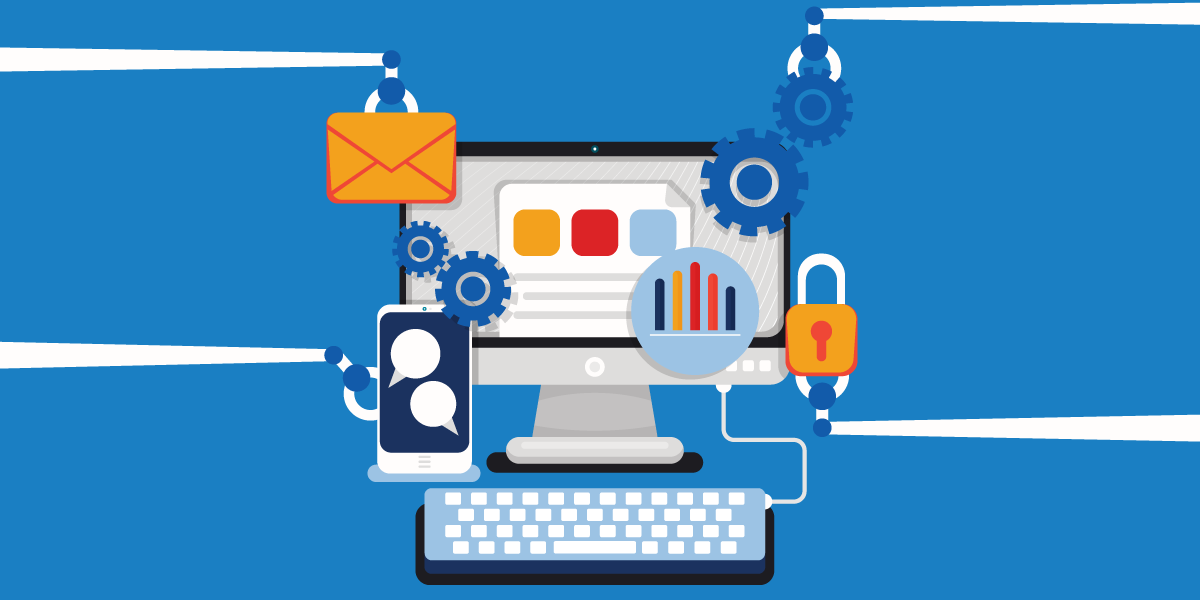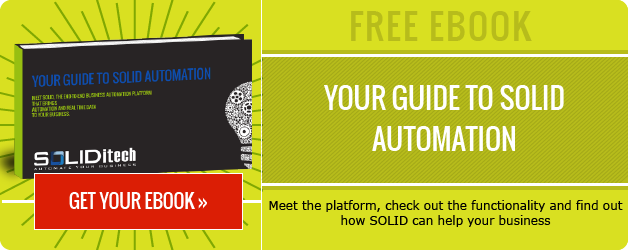It's all the rage and all the cool kids are doing it; from Amazon's delivery drones to the life saving delivery of antiretroviral drugs. Business Automation is everywhere and has fast become the ace in the CTO's pocket.
But what is business automation? Why do businesses consider it? And how can you get started?
Sit back, relax and enjoy the ride as I break down these questions and tell it t o you - the way it really is.
Definition
According to Wikipedia, Business Automation, or Business Process Automation is :
"the strategy a business uses to automate processes in order to contain costs. It consists of integrating applications, restructuring labor resources and using software applications throughout the organization."
I only partially agree.
In reality, it is about:
- Analysing the processes that exist within your organisation (small or enterprise)
- Identifying the ones that slow you down to the extent that they cost more than they are worth - these tend to be manually driven
- Understanding if there is a better, more efficient way to execute that process by automating it
- Putting that plan into action
It's not only about saving money. Yes, that does tend to be a primary driver, but it’s not the only reason businesses look to automation as a progressive (and essential) tool.
Key challenges businesses have before automation
Some business live by the adage "if it ain't broke, don't fix it".
But consider the story of the cooking frog: if you put a frog in a pot of cold water and slowly turn the heat up, he will cook to death before he notices the change. Whereas, if you already have the water boiling and then pop him in, he’s likely to jump straight out.
Think of how that story applies to change.
Your business has been operating for years. Your processes have grown organically over time as you've grown. You've added to them, adjusted, morphed, and even bent them to make everything "just work for now". If you could start over tomorrow, I'll bet you wouldn't do everything the same way - right? You'd want to be more efficient, more productive and waste less time, well, wasting time.
Time is valuable and should be spent on driving strategic growth, building great products that fulfill your customers' needs, and leading the way to a successful future within your industry.
This is why businesses start to think about automation.
Bad, inefficient processes can only operate for so long until they achieve a critical mass where they start affecting:
- Customer service
- Time to market
- Revenue leakage
- Resource costs
- Strategic/competitive advantage
- Cross-department communications
This is typically when businesses start to think about how they can work smarter.
Typical Benefits
As I alluded to above, there are many. The most commonly cited is cost savings - which is absolutely true. But it’s about so much more than that.
Other benefits include:
- Quality
- Consistency
- Time savings
- Metric visibility
- Improved operational efficiency
- Governance and reliability
- Improved turnaround times
You can read a bit more into the detail behind each in this post, but the bottom line is - automation is certainly something worth considering.
Most Common Concerns
There are many concerns and some pretty stubborn myths surrounding automation, including:
- It's too expensive
- I'll lose my job
- It won't do what I want it to
- It'll solve all my problems
- You need a lot of technical understanding
- It's a project too big for my small business
We've addressed some of the biggest myths in this post, but our advice to businesses is always this: It's your business, you are the experts and you need to understand what you want to achieve through automation.
Human interaction still matters, and when analysing your business's processes and operations this should always be kept in mind.
How to get Started
Automation doesn't always have to be an all-singing, all-dancing fancy pants installation that does everything short of bringing you coffee. It can be as simple as setting up email filters and using canned responses, as suggested by The Mogul Mom.
Our recommendation is this: Draw up a list of the key problems you’re experiencing. Break it up into 'absolutely essential to fix' and 'nice to have'. Be tough, be honest and be thorough.
Having a clear understanding of what you want to achieve through automation helps you remain on-goal. If you're unsure, you could end up with a solution that ticks off all your 'nice to haves' but doesn't actually propel your business forward.
Conclusion
Business Automation is powerful technology that allows you to automate previously manual and time-consuming tasks. It enables efficiency, aids productivity, saves time and reduces costs (amongst other benefits). Automation can be anything from auto-applying filters in your gmail inbox to automating your entire billing and collections functions.
It is technology, harnessed to extract maximum value from your operational processes.
But remember, with great power, comes great responsibility. For more about automation in general, head over to our blog post "Everything you need to know about Business Process Automation".








Comment